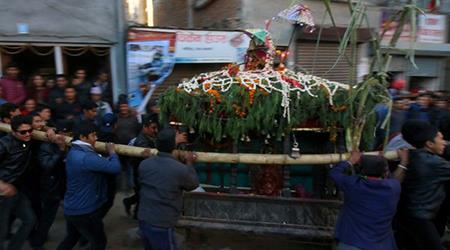As this village, Panga,
is situated on the slope, in the beginning of its establishment, people might
have started calling it Pa: Gan, which means slope
village in Newar language; and later on they may have called Panga
for their convenience in pronouncing the word. Its ancient name is Pagum.
In this village, which is situated on the southern part of Kirtipur, about 95
percent of the people are Newars. The people from other ethnic communities also
celebrate different festivals according to Newari customs. The Cow festival of
this place is very interesting day and is celebrate differently form the same
festival celebrated in other parts. The two ancient Narayan temples, the
statues of Vasundhara of Lachhi, and the temple of Ganesh of Dhusi Tole are
important tourists centers of the village.
According to Dev Malla Vamashawali, King Ratna
Malla established the village of Panga with three hundred houses in the year
Nepal Era 629-30 for the safety of the town of Kirtipur, the capital of his
kingdom. Hence, this settlement came to be called Panga. There is another
explanation on how it has been named Panga. The ancient name of this settlement
is Shankapur.
In one of the songs of Nepal Bhasa (Newar Language), this word Shankapur is
used. According to the local people of the village, the local people started
calling the name of the village because when Shankaracharya, the greatest philosopher of India, came to
Kathmandu to preach his Hindu religion, he stayed at this village.
In every festival, the people of Panga first worship the
statue of Ganesh, which is seated at Dhusi Tole, and which is thought to have
been established by Shankaracharya. They celebrate the festival of Vishnu Devi
and Balkumari in the Nepalese month of Mangsir (November/December), on the day
before the festival of Indrayani, which is celebrated in Kirtipur, by inviting
the relatives on the day before the festival.








0 Comments